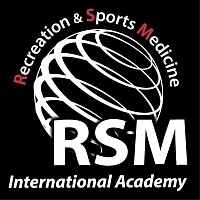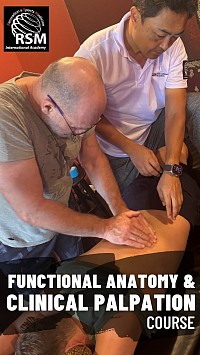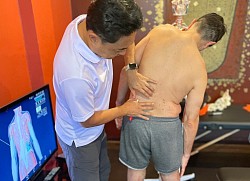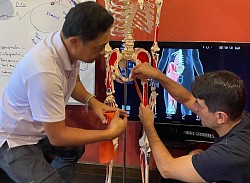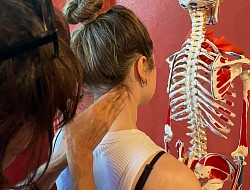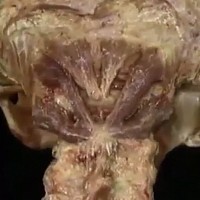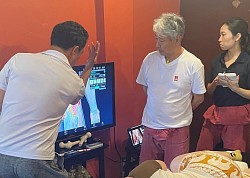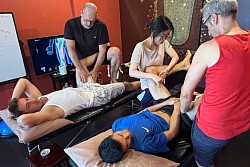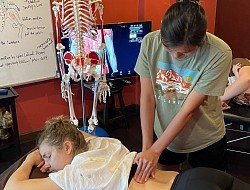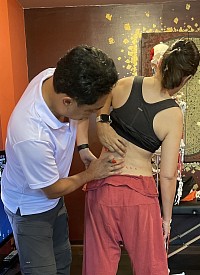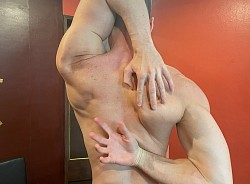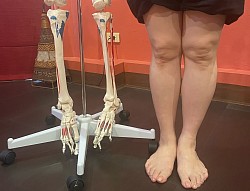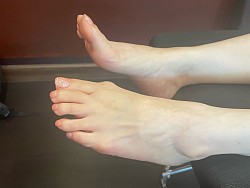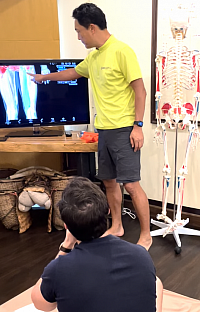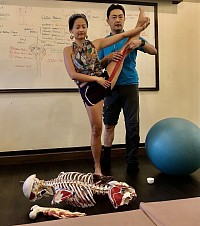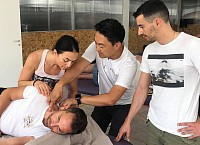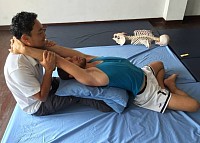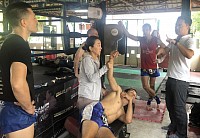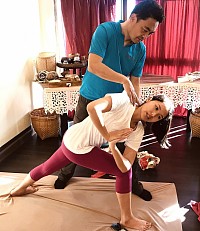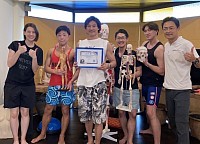Functional Anatomy & Clinical Palpation Course for Therapists
Adapt Your Massage Skills to the Needs of Your Clients
Mastering clinical palpation is essential for massage professionals, particularly in addressing pain, postural issues, and muscle dysfunctions. This course equips you with the critical skills needed to accurately assess muscle and joint conditions, avoiding years of ineffective practice.
You will gain a comprehensive understanding of how muscles function within the kinetic chain, which is fundamental for evaluating posture and movement. This foundational knowledge is crucial for analyzing and addressing posture and movement patterns in clients.
By acquiring this skill set, you can accelerate your professional development, refining your massage techniques under the guidance of renowned experts. Learn directly from Hironori Ikeda, a specialist recognized for his expertise in this field. This course provides a unique opportunity to deepen your understanding of functional anatomy and enhance your ability to deliver high-quality care in your practice.
Enhance Your Clinical Palpation Skills with Real Cadaver Anatomy Photos
This course, based on insights gained from education at Chiang Mai University’s Department of Anatomy, is one of the most important courses for learning clinical palpation techniques and functional anatomy. Utilizing real cadaveric images, it provides a thorough understanding of muscle assessment and palpation skills.
By mastering these palpation techniques, you will be able to perform comprehensive assessments of posture, movement, and the underlying causes of pain.
This course is essential for beginners and healthcare professionals alike, equipping participants with critical skills.
Course Fee & Timetable
🔸 5,000 Baht
(approx. EUR 131 / USD 147)
2-Day Intensive Course, Saturday & Sunday
Training 10:00-12:00 / 13:00-15:00
( Total Duration: 8 hours )
For those unable to attend this course due to scheduling conflicts, Private Massage Courses are also available to help you train and improve your palpation skills.
Master Clinical Palpation Techniques - Professional Training with Expert Guidance
Led by Hironori Ikeda, M.Sc. in Sports Medicine from the University of Tsukuba, Japan, a leading professional in the field, this course offers a rare opportunity to learn directly from a top expert. Limited to 7 participants, it ensures personalized instruction and intensive interaction.
Many therapists spend years without mastering the techniques covered here, delaying their professional development. In just two days, this course provides essential skills in clinical palpation and functional anatomy. Learning directly from Ikeda is a crucial step in advancing your career and gaining valuable expertise in these critical areas.
By using skeleton models and software, Functional Anatomy becomes easier than you may think
At RSM, we understand that learning functional anatomy can be challenging.
We offer a weekend workshop utilizing skeleton models and anatomy apps. In a playful manner, students can gain a comprehensive
understanding of bones, muscles, and joints, while learning at their own
pace and actively participating. In this way you can seamlessly build a strong functional
anatomy foundation for your massage practice.
Hands-on exercises help you gain practical knowledge of functional anatomy
In this course, you’ll acquire crucial skills in functional anatomy and dynamic postural assessment. You’ll explore how muscle movements impact everyday activities such as walking, running, yoga stretches, and sports.
By understanding and applying kinetic chains, you’ll enhance your ability to optimize performance and meet client needs effectively. This course provides practical insights into kinetic chains and palpation techniques, helping you prevent incorrect outcomes that often result from insufficient anatomical knowledge. Many massage therapists fail to achieve desired results because they lack this essential knowledge.
By mastering these skills, you’ll be able to provide massages that are precisely tailored to your clients’ needs.
Clinical Palpation & Functional Anatomy for Massage Therapists
For massage therapists, knowledge of functional anatomy is a necessary skill to identify areas of muscle tension and dysfunction, relieve pain and improve dynamic posture.
Understanding musculoskeletal anatomy will also enable massage therapists to explain the meaning and benefits of massage to clients and provide important knowledge in teaching them how to maintain their bodies at home. This knowledge is a must for therapists to be trusted by their clients.
Clinical Palpation & Functional Anatomy for Thai Massage Practitioners
Thai massage and stretching can be effective for improving flexibility, reducing muscle tension, promoting relaxation, and enhancing overall physical and mental well-being.
By understanding functional anatomy, Thai massage practitioners can identify potential issues and imbalances in their clients and tailor their techniques to address them more effectively.
You can also modify your techniques to accommodate specific body types or limitations, resulting in a more customized and effective massage for your clients.
Clinical Palpation & Functional Anatomy For Sports Trainers
By understanding functional anatomy, sports trainers can identify potential issues and imbalances in their athletes' posture and movement patterns and tailor their training programs to address them more effectively. They can also modify exercises and drills to accommodate specific body types or limitations, resulting in a more customized and effective training experience.
This understanding also enables trainers to teach proper technique and form, which further reduces the risk of injury.
Clinical Palpation & Functional Anatomy for YOGA teachers and practitioners
By understanding functional anatomy, yoga teachers can identify potential issues and imbalances in their students' posture and alignment and tailor their teaching to address them more effectively.
They can also modify poses and sequences to accommodate specific body types or limitations, resulting in a more customized and effective yoga practice.
Enhancing mobility through Range Conditioning
Incorporating range conditioning techniques into yoga sequences is another way to help students use exercises and stretches that take joints through their complete range of motion. Yoga teachers can supplement students' practice with active stretches which improve joint mobility and muscle elasticity.
Certificate and Career Opportunity
Course participants receive a diploma from RSM, which serves as a testament to their concrete interest in functional anatomy and their commitment to providing quality therapeutic care.
This certification not only enhances your professional credibility but also expands your career opportunities within the wellness industry.
